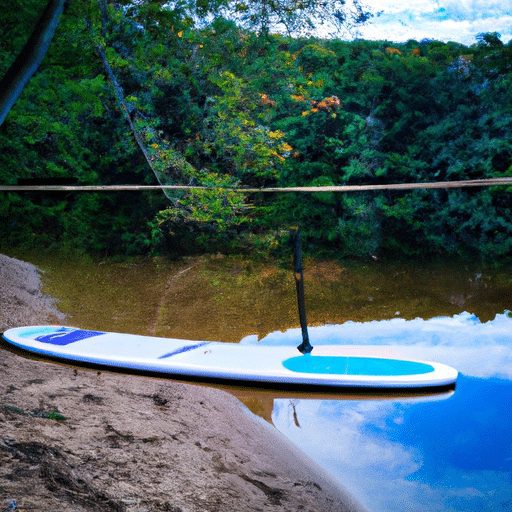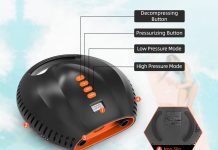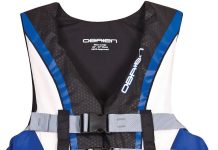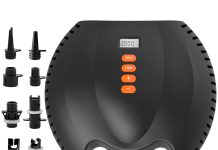What’s the best way to ensure your SUP paddle reaches the serene waters without a hitch? The answer lies in finding the most reliable method to transport it. Whether you’re a seasoned paddleboard enthusiast or a newbie, the last thing you want is a cumbersome and inefficient transportation experience. In this article, we’ll explore some tried and tested techniques that will have you enjoying your paddleboarding adventures with ease and peace of mind. From practical gear options to clever techniques, we’ve got you covered on the journey to finding the perfect transportation solution for your SUP paddle.
Choosing the Right Equipment
When it comes to transporting your SUP paddle, selecting the right equipment is crucial to ensure its safety and longevity. Three key factors to consider are the suitable paddle bag, the length of the paddle, and the right paddle material.
Selecting a Suitable Paddle Bag
A paddle bag is an essential accessory to protect your SUP paddle during transportation. When choosing a paddle bag, look for one that is durable and offers sufficient padding to cushion the paddle against any potential bumps or impacts. Additionally, consider the size of the bag to ensure it can accommodate your paddle comfortably.
Consider the Paddle Length
The length of your paddle is another important consideration when transporting it. If your paddle is adjustable or collapsible, be sure to adjust it to the shortest length possible before transportation. This will not only make it easier to handle but also reduce the risk of it getting caught on anything during transport.
Choosing the Right Paddle Material
The material of your SUP paddle can affect how it should be transported. Paddles made of materials such as carbon fiber or fiberglass are lightweight and prone to damage if not handled with care. Consider investing in a paddle bag specifically designed to protect delicate materials. For paddles made of aluminum or plastic, a sturdy bag with padding will still provide ample protection.
Preparing Your Paddle for Transportation
Before you transport your SUP paddle, it’s important to properly prepare it. Taking a few simple steps such as cleaning and drying the paddle, securing loose parts, and protecting the blade can go a long way in ensuring its safety during transportation.
Cleaning and Drying the Paddle
Before transporting your SUP paddle, give it a thorough cleaning to remove any dirt, debris, or saltwater residue. Use mild soap and water to gently clean the paddle, making sure to dry it thoroughly afterward. This will not only prevent any potential damage, but it will also keep the paddle in good condition for future use.
Securing Loose Parts
Check your paddle for any loose parts, such as adjustable handles or blade attachments. Ensure that these parts are securely tightened to prevent them from coming loose during transportation. This will help to avoid any unnecessary damage or loss of components while in transit.
Protecting the Blade
The paddle blade is one of the most vulnerable parts of your SUP paddle, and it’s important to protect it during transportation. Consider using a blade cover or wrapping the blade with a towel or bubble wrap. These simple measures will provide an extra layer of protection and prevent any accidental bumps or scratches.
Transporting the Paddle on Foot
If you’re planning to transport your SUP paddle on foot, there are several options available to make the process easy and convenient. Whether you choose to carry the paddle by hand, use a paddle sling, or utilize a backpack, each method has its own advantages.
Carrying the Paddle by Hand
If you prefer a straightforward approach, carrying your paddle by hand is a simple and effective method. Grab the shaft of the paddle in the middle and balance it on your shoulder or hold it alongside your body. This method allows you to have full control over your paddle and keeps your hands free for other tasks.
Using a Paddle Sling
A paddle sling is a convenient accessory that allows you to sling your paddle over your shoulder, leaving your hands free. This is particularly useful if you need to carry other items or if you’re planning a longer walk to the water. Simply slide the sling over the paddle shaft and adjust it to a comfortable position. The paddle will rest securely on your shoulder, leaving your hands and arms relaxed.
Utilizing a Backpack
If you’re looking for a hands-free option with added storage space, using a backpack specifically designed to carry a SUP paddle is a great choice. These backpacks usually have a dedicated compartment or attachment system that securely holds the paddle. The backpack distributes the weight evenly, making it comfortable to carry for longer distances.
Transporting the Paddle on a Bike
If you prefer to ride your bike to the water, there are several methods available to transport your SUP paddle safely. Whether you choose to use a paddle holder or clamp, mount the paddle on the handlebars, or attach it to a rear bike rack, each option has its own benefits.
Using a Paddle Holder or Clamp
A paddle holder or clamp is a simple and effective way to transport your SUP paddle on a bike. These accessories attach to the frame or handlebars and securely hold the paddle in place. Look for a paddle holder or clamp that is adjustable to accommodate different paddle lengths and ensure a secure fit.
Mounting the Paddle on the Handlebars
If you have a shorter paddle or prefer to keep it within easy reach, mounting it on the handlebars can be a convenient option. Use paddle clips or bungee cords to secure the paddle to the handlebars in an upright position. This allows for quick and easy access to the paddle when you’re ready to hit the water.
Attaching the Paddle to a Rear Bike Rack
For longer paddles or if you prefer to keep your bike’s handlebars clear, attaching the paddle to a rear bike rack is a suitable choice. Use bungee cords or straps to secure the paddle horizontally to the bike rack. Make sure it is tightly fastened to prevent any movement or potential damage during transportation.
Transporting the Paddle on a Car
Transporting your SUP paddle on a car requires additional precautions to ensure its safety and avoid any potential damage. Whether you choose to use roof racks or crossbars, secure the paddle with straps or bungee cords, or utilize a suction cup mount, each method provides a secure way to transport your paddle.
Using Roof Racks or Crossbars
Roof racks or crossbars are a popular choice when it comes to transporting paddleboards and their accessories on a car. They provide a stable and secure platform to attach your paddle. Make sure to follow the manufacturer’s instructions for installation and weight capacity. Securely fasten the paddle to the racks using straps or bungee cords, ensuring a tight fit.
Securing the Paddle with Straps or Bungee Cords
To prevent any movement or potential damage while driving, secure the paddle tightly to the roof racks or crossbars using straps or bungee cords. Crisscross the straps over the paddle and the roof racks to create a secure and stable hold. Double-check that the paddle is tightly fastened before hitting the road.
Utilizing a Suction Cup Mount
If you have a car with smooth surfaces, a suction cup mount can be an effective option for transporting your SUP paddle. These mounts attach directly to the car’s surfaces, such as the roof or rear window. Ensure the suction cups are securely attached and test their stability before placing the paddle in the mount. This method is best suited for shorter journeys or lower speeds.
Transporting the Paddle on Public Transport
Transporting your SUP paddle on public transport requires careful planning to ensure compliance with length restrictions and the safety of other passengers. Whether you choose to check length restrictions, use a paddle bag or sleeve, or store the paddle under or beside the seat, following these guidelines will make your journey smooth and hassle-free.
Consider Length Restrictions
Before using public transport, it’s essential to check if there are any restrictions regarding the length of items you can bring on board. Some buses, trains, or trams may have limitations on length, and disregarding these restrictions may result in inconvenience or fines. Ensure your paddle’s length complies with any regulations before attempting to transport it on public transport.
Using a Paddle Bag or Sleeve
Transporting the paddle in a bag or sleeve is the safest and most considerate method when using public transport. It keeps the paddle protected and prevents accidental damage to other passengers or their belongings. Place the paddle in a bag or sleeve designed specifically for paddle transportation and store it in an upright position or beside your seat.
Storing the Paddle under or beside the Seat
If your SUP paddle is compact enough, storing it under or beside your seat can be a practical option. Ensure the paddle is secure and does not obstruct the walkway or other passengers. If storing the paddle under the seat, make sure it won’t get caught in any moving parts or interfere with your comfort during the journey.
Transporting the Paddle on an Inflatable SUP
Transporting a paddle on an inflatable SUP requires special considerations due to the unique nature of inflatable boards. Whether you choose to roll and store the paddle, attach it to the SUP pack, or utilize a detachable paddle design, these methods will ensure a safe and convenient journey.
Rolling and Storing the Paddle
When transporting a paddle with an inflatable SUP, rolling and storing the paddle is a practical solution. Ensure the paddle is clean and dry, then collapse or adjust it to the shortest length possible. Roll the paddle tightly and secure it with straps or a bungee cord. Store the rolled paddle in the designated storage area or attach it to the SUP pack.
Attaching the Paddle to the SUP Pack
If your SUP pack has additional attachment points, utilize them to secure the paddle during transportation. Attach the paddle to the SUP pack by using straps or bungee cords, ensuring it is securely fastened and won’t come loose during travel. This method keeps the paddle conveniently close to your inflatable SUP when not in use.
Utilizing a Detachable Paddle Design
Some inflatable SUPs come with a detachable paddle design, which allows the paddle to be easily separated into shorter sections. This makes transportation more manageable, as the paddle can be compactly stored in a bag or secured to the SUP. Make sure to follow the manufacturer’s instructions for detaching and securing the paddle sections.
Protecting Your Paddle during Transportation
To ensure your SUP paddle remains in excellent condition during transportation, it’s essential to take steps to protect it from any potential damage. Consider using paddle blade covers, wrapping the paddle with a towel or bubble wrap, and applying protective padding for added protection.
Using Paddle Blade Covers
Investing in paddle blade covers is an excellent way to provide an extra layer of protection for your paddle blades. These covers are designed to fit over the blades snugly, providing a barrier against scratches or bumps. Ensure the covers are securely fastened and that the blades are completely covered before transporting your paddle.
Wrapping the Paddle with a Towel or Bubble Wrap
If you don’t have access to paddle blade covers, wrapping your SUP paddle with a towel or bubble wrap can offer similar protection. Start by wrapping the blades with a soft towel or bubble wrap, ensuring they are completely covered. Then, use additional material to protect the rest of the paddle shaft. Secure the wrapping with tape or straps to prevent it from coming loose during transportation.
Applying Protective Padding
When transporting your SUP paddle in a bag, consider adding extra padding for added protection. This can be achieved by placing foam or additional towels around the paddle inside the bag. The padding will absorb any potential impacts and help keep your paddle safe and secure during transportation.
Securing the Paddle in a Vehicle
Securing your SUP paddle properly in a vehicle is crucial to ensure both your paddle’s safety and the safety of others on the road. Consider using velcro straps or tie-downs, installing interior accessories, and choosing a locking system to keep your paddle secure.
Using Velcro Straps or Tie-Downs
Velcro straps or tie-downs are essential tools for securing your SUP paddle in a vehicle. These can be used to hold the paddle in place, preventing it from moving or sliding during transit. Attach the straps or tie-downs to the vehicle’s anchor points or interior fixtures and ensure they are tightly fastened around the paddle to keep it secure.
Installing Interior Accessories
Consider installing interior accessories specifically designed to secure your SUP paddle in a vehicle. These accessories can include paddle racks, clips, or hooks that provide a dedicated space for the paddle and prevent it from shifting or falling over during transportation. Consult the manufacturer’s instructions for proper installation and usage guidelines.
Choosing a Locking System
If you need to leave your paddle in a parked vehicle, choosing a locking system can provide an extra layer of security. Locking systems, such as bike locks or cable locks, can be used to secure the paddle to a fixed object within the vehicle. This will deter theft and ensure your paddle is safe and protected, even when you’re not around.
Additional Considerations
Transporting your SUP paddle requires more than just the right equipment and securing methods. Here are some additional considerations to keep in mind to ensure a smooth and safe journey.
Weather Conditions
Before transporting your SUP paddle, consider the current and forecasted weather conditions. High winds, heavy rain, or extreme temperatures can affect your paddle’s safety during transportation. Take appropriate measures, such as using additional straps or covers, to protect your paddle from adverse weather conditions.
Traffic and Road Conditions
Traffic and road conditions can play a significant role in the safety of your paddle during transportation. Avoid roads with excessive potholes, bumps, or uneven surfaces, as these can potentially damage your paddle. Be mindful of heavy traffic or congested areas, as sudden stops or movements can cause your paddle to shift or fall.
Public Safety Regulations
When transporting your SUP paddle in public spaces or on public transport, it’s important to adhere to any applicable safety regulations. Familiarize yourself with any guidelines or restrictions in your local area regarding the length, size, or transportation of paddleboards and their accessories. Respecting these regulations will ensure a safe and hassle-free journey for you and others.
In conclusion, transporting your SUP paddle requires careful consideration and appropriate equipment. By selecting the right paddle bag, preparing the paddle for transportation, choosing the appropriate method for different modes of transport, and taking precautions to protect and secure the paddle, you can ensure its safety and longevity. Additionally, being mindful of weather conditions, traffic and road conditions, and public safety regulations will contribute to a smooth and stress-free transport of your SUP paddle to the water.





































